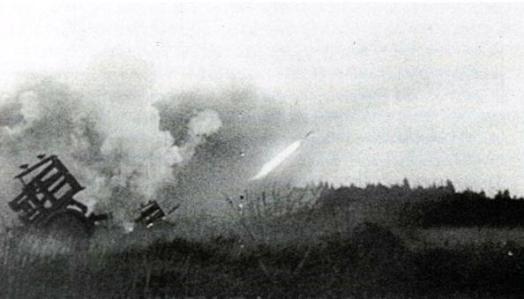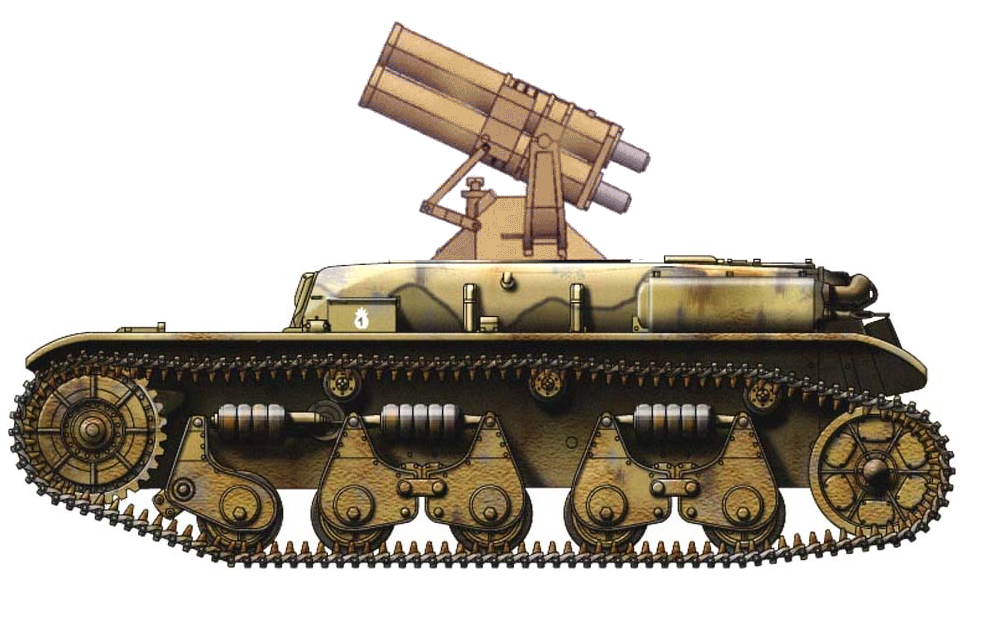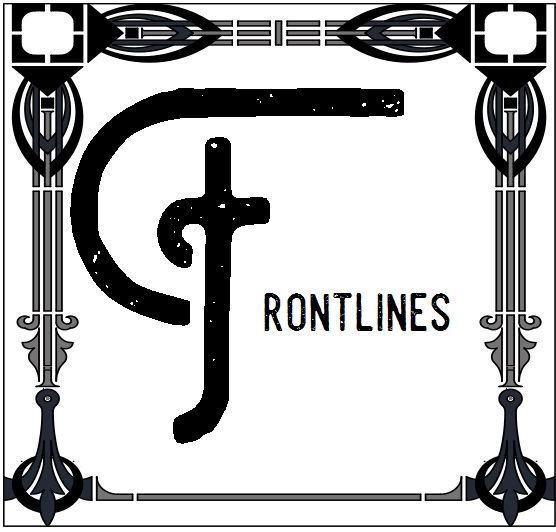The French Artillerie de Roquettes Rapide was formed in October 1946 in Pamplona, with the establishment of 1er Bataillon de Roquettes (Rapide). This organization, an important part of French battle lines during the 1950s, started out as an experimental force to test rocket tactics on armored vehicle chassis.
Origins
The French hadn’t invested heavily in rocket technology during their rearming in the 1930’s. While the French, historically, had been pioneers in military rocketry, the importance of rockets in a modern force wasn’t appreciated until the invasion of Britain. During that conflict, the British had some success using the Unrotated Projectile anti-aircraft weapon against French planes, though this success was strictly limited. Nevertheless, the use of rockets by the British inspired the French to establish a minor research institution in Lyon to research modern rocketry. This institution, Institut de Recherche en Fusée et Balistique (Institute for Research in Rocketry & Ballistics) was underfunded in the French military hierarchy, so progress was slow.
By 1945, the institute had succeeded in constructing a rudimentary military rocket with a diameter of 10 cm. This rocket’s range was strictly limited (around 3,000 meters) and the launching system didn’t function properly, so it wasn’t adopted.
The Iberian War
The next year, during the Iberian War, the French experienced PPA rocket artillery firsthand. The PPA had bought rocket artillery pieces for use in their 1942 Invasion of Britain from Socialist Russia, and made it an integral part of their artillery organization. The PPA expeditionary forces brought a detachment of rocket artillery with them to Spain, and the first use against the French was during the March 1946 León offensive. The French commander was killed by rocket shrapnel on the third day of the offensive, directly contributing to the loss of the French forces.
The battles of Summer 1946 convinced the French of the necessity of rocketry in their organization, and provisional rocket artillery troops were formed in Bilbao using captured PPA equipment. The French soon found fault with this, however, since the PPA’s rockets were usually mounted on a carriage that needed to be hooked to a prime mover to relocate after firing. This made them very vulnerable to attacks from the air and counter-battery fire, since their firing left a telltale smoke trail. To counteract this, the French first copied the Russian solution of placing the launchers on trucks, but the poor nature of French motor transport in Spain meant that this solution was also unsatisfactory.

In late August, a French battery commander tried mounting a PPA 132mm rocket launcher on a disused M36(V) medium tank. Though this chassis wasn’t impressively quick, it was able to move over difficult terrain and the crew was protected by the armored hull when the rockets were fired. Six rocket tubes were mounted on a traversable mount, with twelve reloads carried within the hull, though more were often carried (French rocketeers had the habit of strapping additional rockets to the exterior of their launchers during the Iberian War despite this being against regulations).
The success of this experiment led to additional conversions in September. Two companies were formed; one equipped with M35(V) light tanks armed with four 132mm tubes, and one equipped with ML34(V) medium tanks armed with six 132mm tubes. Both types of tank were slow and obsolete, meaning they were perfect for the conversion.
The companies went into combat supporting the Logroño breakout in mid-October. During that operation, the age of the M35(V) and ML34(V) chassis began apparent to the point that it hampered operations significantly. The commander of the M35(V) unit (provisionally known as 2ème Compagnie d’Artillerie de Roquettes Rapide) was aggressive with his units to the point that they outran their anti-air cover. In the ensuing confusion, French ground attack aircraft attacked since the rocket artillery was in an unexpected position. This resulted in the loss of four launchers before the aircraft realized their mistake.

Formation of the AdRR
Nevertheless, the advantages of an armored vehicle chassis for launching rockets was apparent and further conversions were ordered. It was found that the light tank chassis of the M35(V) was more suited to the conversion than the larger, slower ML34(V)s and, thus, a greater number of the former were converted. It was these converted tanks, known under the designation Char d’Artillerie de Roquettes Rapide de M35(V), or CARR M35(V), that formed the main force for the Artillerie de Roquettes Rapide during its first few years of existence. These years mostly saw captured PPA equipment being used against their former owners, with some French prototypes being used in some areas.
A boon came for the program after the 1947 Syrian overthrow of the French Mandate. This conflict, while a military disaster for France, provided France with a generous stock of Russian weaponry after a Russian freighter sailing to Jordan was intercepted by a French destroyer. Among the weapons discovered onboard were rockets and launchers for Socialist Russian multiple rocket systems. The designs of these rockets and launchers were studied by the IRFB and resulted in the Type 32, Type 34 and Type 35 rocket systems, with 76mm, 150mm and 212mm diameters, respectively.
1947 was the first year where the AdRR saw combat. Fire control and accuracy of the rockets improved over time, since it was initially very poor (several grisly friendly fire incidents occurred during the Winter 1946 campaigns). By the Summer, the AdRR had two full battalions of Rocket Artillery with a third battalion being formed in France proper. The main limitation on early French efforts was the amount of captured PPA equipment available, since there was a significant lag in producing effective French rockets. The Type 32, 34 and 35 did not come online until October 1947, so in the interim the French produced a Type 30(A) rocket and launcher which was a direct copy of the PPA Mark 8.
Cabines Blindées
The main French innovation in the field of multiple rocket launcher artillery began in 1948. The French found it problematic that, during the firing of a salvo, the crew of the launcher had to retreat inside of the tank to take cover, or else beside or behind it. This produced something of a lag time, especially if the vehicle had been on the move and stopped just before firing. To fix this issue, the French started to install armored cabs (Cabines Blindées) on the tops of the CARR tanks with firing controls inside them. This allowed the vehicle to fire at any point (even without stopping, though this made accuracy extremely poor), as long as the rocket tubes were loaded.
By 1948, the French were running out of old tanks that were suitable for conversion and so began converting newer models. In particular, the VBG Mle 45 provided a suitable conversion platform, since it was relatively quick and also large, allowing for large-caliber launchers to be mounted. This conversion (known as CARR 45) was carried out slowly at first, since the Mle 45 was still highly valued as a combat tank during the Iberian War. After the war conversions would pick up as newer tanks replaced the VBG; indeed, by 1952 30% of the AdRR was equipped with CARR 45s, which composed most of the heavy rocket battalions.


